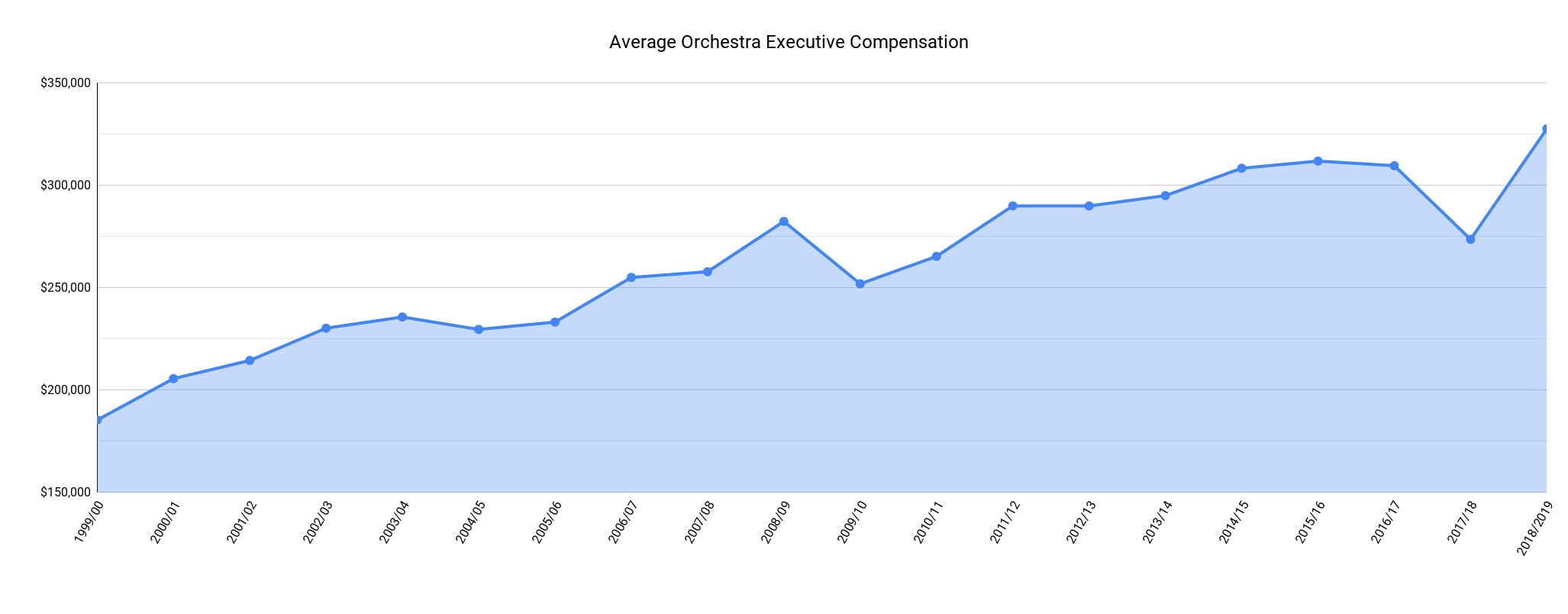On one hand, it’s great to see orchestras hiring back staff members who were laid off or furloughed over the pandemic. At the same time, when I speak with a number of executives it is clear they are having a difficult time not only hiring back those workers, but attracting new employees to fill those now vacant positions and the single most common reason is uncompetitive pay.
It’s no secret nonprofit employers have a difficult time matching pay for comparable staff positions at commercial organizations. Simply put, that needs to change. But we can’t ignore that the rate of increase for average executive compensation has outpaced that of average staff for two solid decades. In short, it’s a similar ratio of average annual compensation for executives realized to the average compensation for staffers. Here’s the change of average orchestra executive compensation from the 1999/00 to 2018/19 seasons.

I wish there was a similar chart to show for various staff positions common across all orchestras but sadly, no one tracks that information and unlike executive compensation, nonprofits are not required to disclose it. If there were, it would illustrate exactly how much that gap has grown over the past twenty years.
In the end, the only way we can see this change for the better is if the field expects more. There’s no way around the fact that the cost of staff salaries will increase. The alternative of expecting an unlimited supply of high caliber professionals to feed the high attrition beast is unrealistic.
In combination with this drive toward parity is a commitment to level the compensation gap between executive, middle management, and staff positions. No one group should enjoy annual increases at the expense of others.
This is never an easy conversation but there’s never been a better time to have it than right now when organizations are really feeling the restaffing punch. If nothing else, it helps provide a degree of empathy needed to facilitate change at the board level.


